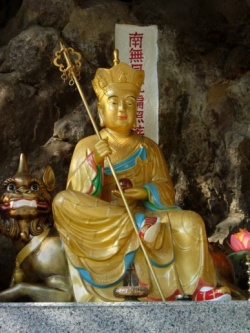What Is Sutta Pitaka?
The Sutta Piṭaka is a collection of all the discourses delivered by the Buddha on various occasions in their entirety. A few discourses delivered by some of the distinguished disciples of the Buddha, such as the Venerable Sāriputta, Mahā Moggallāna, Venerable Ānanda etc., as well as some narratives, are also included in the books of the Sutta Piṭaka.
The discourses of the Buddha collected together in the Sutta Piṭaka were delivered to suit different occasions and different audiences with different temperaments. Although the discourses were mostly intended for the benefit of bhikkhus and deal with the practice of the pure life and with the explanation of the teaching, there are also several other discourses which deal with the material and moral progress of the lay disciple.
The Sutta Piṭaka brings out the meaning of the Buddha’s teachings, expresses them clearly, and protects and guards them against distortion and misinterpretation. Just like a string which serves as a plumb-line to guide the carpenters in their work, just like a thread which protects flowers from being scattered or dispersed when strung together by it, similarly by means of suttas the meaning of the Buddha’s teachings can be brought out clearly, grasped and understood correctly, and given perfect protection from misinterpretation.
The Sutta Piṭaka is divided into five separate collections known as nikāyas. They are Dīgha Nikāya, Majjhima Nikāya, Saṃyutta Nikāya, Aṅguttara Nikāya, and Khuddaka Nikāya.
Observances and Practices in the Teaching of the Buddha
In the Sutta Piṭaka are found not only the fundamentals of the Dhamma but also practical guidelines to make the Dhamma meaningful and applicable to daily life. All observances and practices which form steps in the Buddha’s Noble Path of Eight Constituents lead to spiritual purification at three levels:
Sīla-moral purity through right conduct.
Samādhi-purity of mind through concentration (samatha).
Paññā-purity of insight through Vipassana meditation.
To begin with one must make the right resolution to take refuge in the Buddha, to follow the Buddha’s teaching and to be guided by the Sangha. The first disciples who made the declaration of faith in the Buddha and committed themselves to follow his teaching were the two merchant brothers, Tapussa and Bhallika. They were traveling with their followers in five hundred carts when they saw the Buddha in the vicinity of the Bodhi tree after his enlightenment. The two merchants offered him honey rice cakes. Accepting their offering and thus breaking the fast he had imposed on himself for seven weeks, the Buddha made them his disciples by letting them recite after him:
Buddhaṃ Saranaṃ Gacchāmi (I take refuge in the Buddha)
Dhammaṃ Saranaṃ Gacchāmi (I take refuge in the Dhamma)
This recitation became the formula of declaration of faith in the Buddha and his teaching. Later when the Sangha became established the formula was extended to include the third commitment:
Saṅghaṃ Saranaṃ Gacchāmi (I take refuge in the Sangha)
